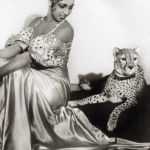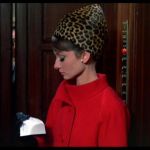
Animal print, the history of the most iconic pattern
From primitive man to the present day with its many facets in fashion, and archive photos of the moments that made this print famous
July 17th, 2023
History of animal print
Animal skins existed before fashion came into being. They were among the garments worn by the oldest tribes. Originally, primitive people used animal skins not only for warmth and protection, but also to wear or display in their homes as a matter of status. This tradition became more entrenched in later eras. Aristocrats, for example, used leather rugs or stuffed animals as a symbol of their power and nobility.
In the 1700s, as contemporary fashion was approached, the first fabric prints began to adorn courts across Europe. Jungle design has not abandoned modern decorating habits either: from living rooms to everyday objects such as smartphone cases, the animal is approaching design. In 2012 at the Salone del Mobile in Milan, it was indeed the lover of this style, Roberto Cavalli, who redesigned the aesthetic of Ciclotte, a mix of fitness equipment and collectible decoration with a profit - ride or design - and presented it in a rather unusual version for a bicycle-like bike with animal print.
The ancient Greeks called this style zoote, from ζωή, meaning life: they had associated the wearing of animal skins closely with Dionysian cults and thus with licentiousness and lust, a commonplace still associated with the world of the animalistic.
Animal print in Paris in the 30s

Josephine Baker
Joséphine Baker, singer and dancer, is the first modern fashion icon who helped the press break through in the luxurious and fashionable environment of Parisian casinos. She is considered to be the first Black celebrity and one of the most respected in the entertainment industry at the time. She used her great popularity in the fight against racism, in particular by supporting Martin Luther King's civil rights movement. Her style was associated with animal motifs. Her exotic taste did not go unnoticed and served as a distinguishing feature of her stage persona. When she performed at the Casino de Paris, the manager of the house gave her her first animal, a cheetah, which she named Chiquita. The cheetah accompanies her on stage, but also in her private life. Chiquita poses and keeps her company in various recordings. The artist would even go so far as to show herself on the Champs-Élysées with the animal on a leash.
Animal print in Haute Couture and cinema
in 1947, the animal entered the glamour of Haute Couture thanks to Christian Dior, who showed dresses made of leopard-sprinkled printed chiffon. This was finally the breakthrough needed for it to be in demand by everyone. Dior was the first designer to fall in love with the exotic and provocative style of this print. His unbridled passion for it led him to use animal fur for coat cuffs and hats. The stars did not hesitate to follow in his footsteps and neither did other fashion houses. In 1953, Marilyn Monroe wore a fur muff with a cape with the same motif in 'Men Prefer Blondes' and in 1963 Audrey Hepburn, the very elegant protagonist in the film 'Charade', wore a spotted hat by Givenchy.
Animal print in the 70s e 80s
Animal print reached its peak in the 70s and 80s. It was revisited in glam-rock style and this time it was fierce: dotted jumpsuits, leotards and lingerie with zebra print for day and evening looks. Debbie Harry, the front woman of the rock group Blondie, was one of the stars who adored this style the most.

Debbie Harry
It was at this time that Roberto Cavalli laid the foundation for what would later become his style identity: a focus on the exotic touch. In the 1970s he presented the cheetah print, in '99 the zebra print and in 2006 the butterfly print. Cavalli chose the Milan catwalks to present a collection full of animal prints that, along with denim, brocades and inlaid leather, would become his trademarks. By the end of the 1990s, the brand was sold in around 40 countries.
Even Valentino let himself be conquered by the animalistic in 1987, so much so that he was nicknamed 'King of the Fashion Jungle'. After a short break in the fashion jungle, Gianni Versace suggested dressing in different colours and silk shirts with a leopard print for the men's prêt-à-porter collection. In the 1990s, Azzedine Alaia, inspired by emerging hip-hop music and street style, proposed the dotted overall look.
Animalier today
Meanwhile, the animal print is destined to stay in fashion history and be a part of every season. Considering the vintage revival of the last few years and the aesthetic niches that dominate the fashion web, it is no longer out of sight. Some interpret it by taking it to a more extreme level than we might have thought, and that is the case of Maison Schiaparelli in this SS 2023 Schiaparelli brought his idea of Dante's Inferno to the catwalk during Paris Fashion Week. Supermodels like Irina Shayk and Shalom Harlow walked the runway accompanied by faux animal heads like wolves, lions and white leopards. Kylie Jenner herself, who sat in the front row next to Chiara Ferragni, previewed one of the creations.
Can Doja Cat and Jared Leto's performance at the Met Gala be called a new frontier of the animalistic? The two did indeed dress up as cats, albeit in different ways, as Karl Lagerfeld's beloved pet Choupette.
Doja appeared in a cat-eared dress, complete with facial prosthetics to fully immerse herself in the simulation. Her glittering silver gown was designed by Oscar de la Renta and had a majestic train adorned with equally glamorous jewellery. As for Jared Leto, this was less a play on style and more a twist: The actor wore a cat costume with white fur and a huge head with ears and whiskers. All that remains is to sit back and wait for the next steps in animal fashion and its further development.




































































